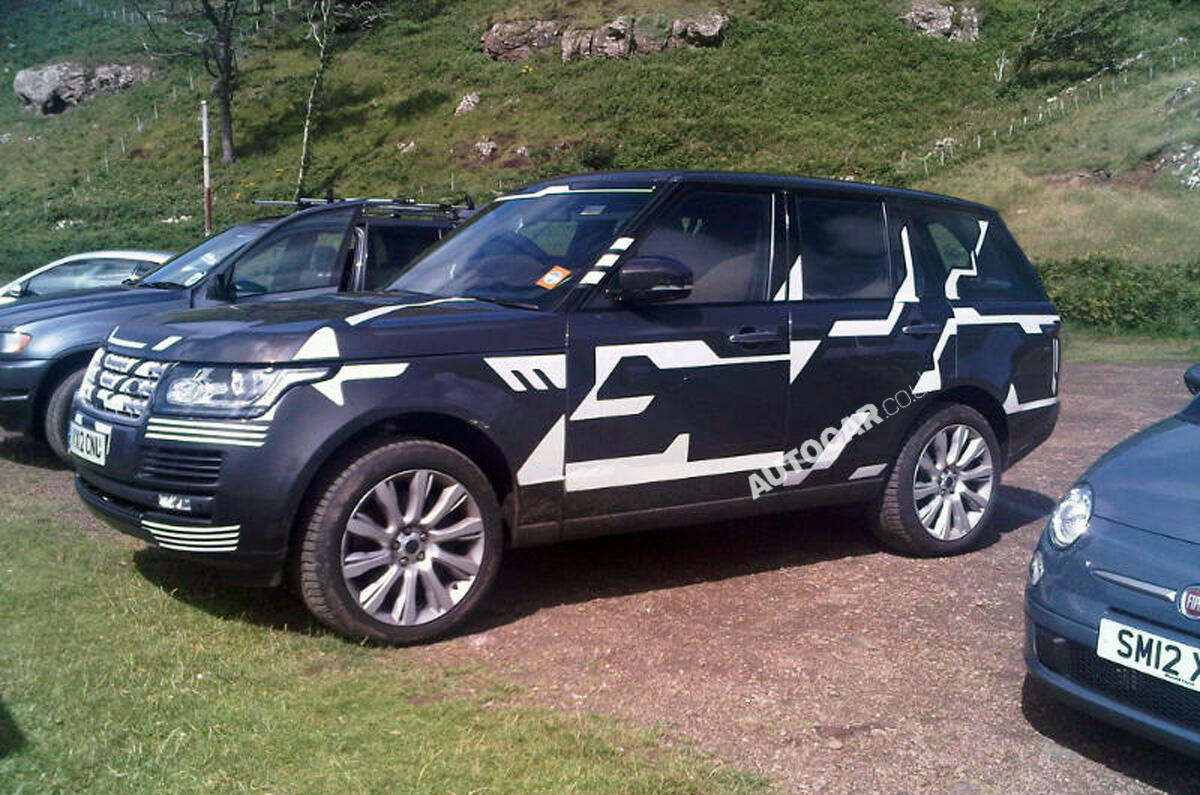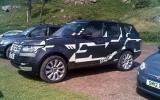The all-new, 2013 Range Rover 4 flagship will be revealed at the Paris motor show - and insiders claim it will be the most radical and technically advanced car in the brand’s history.
These exclusive images - photographed by Autocar reader Greg McKenna on the Isle of Mull - show how Land Rover’s radical new range-topper will look when it replaces today’s Mk3 version, 11 years after the BMW-engineered model was first launched.
Codenamed L405, the Mk4 Range Rover picks up on the sporty styling of the new Evoque and, in so doing, drops a number of long-established Range Rover design cues. The interior will feature a big leap in quality and luxury, cementing the Range Rover firmly in the global market as an out-and-out luxury car.
The Range Rover Mk4 will be built around a new pressed aluminium monocoque, so it will be much lighter than the current car despite an increase in size. Nearly half a tonne should be lopped off the weight of today’s car. The new aluminium platform is slightly wider and around 25mm longer than today’s car.
However, the new architecture has allowed the rear wheels to be pushed further towards the back of the car. The upshot is that rear legroom has improved by as much as 125mm, allowing the rear cabin to compete against the most upmarket luxury cars. Longer rear doors will improve cabin access, too.
The new car has a more steeply raked windscreen and more of a sloping roofline than even today’s Range Rover Sport. The substantial headlamps and rear light clusters that are such a significant part of today’s car will be much slimmer and less obtrusive. Even the vent in the front wing is now dramatically slanted, reflecting the angle of the windscreen.
Although the interior design of today’s Range Rover is highly regarded, the new model is aiming even higher. Sources say the company wants to achieve “Bentley levels of craftsmanship and quality”, as befits a car that will cost over £100,000 in some guises. The luxurious interior of this year’s £130k Autobiography Ultimate Edition offers the best clues to the theme of the Mk4 model.
The car will have the same basic range of engines as today’s, including V6 and V8 diesels, and V8 and supercharged V8 petrols. However, some sources say that a petrol V6 and possibly a supercharged petrol V6 may also be offered. The new V6 made its debut in Jaguar’s C-X16 sports car concept at the Frankfurt show last month. The only V6 petrol engine currently on offer in a JLR product is a Ford unit that recently made a comeback in the XJ for sale in China only.
















Join the debate
Add your comment
Rear Tail Gate
Having owned three of the 3rd generation Range Rovers Land Rover MUST have an electronically/hydraulically opening rear tail gate which can be operated from inside the vehicle. Living in the 'sticks' the vehicle is always dirty just driving the short distances to access a main road. The result is that when you open the tail gate, by hand, your hands are filthy. NOT acceptable in a 'luxury' £80K+ vehicle.
One final point. Get the electrics to function properly BEFORE you market & sell the vehicle...AND MAKE SURE THE BATTERY IS MAN ENOUGH FOR ALL THE ELECTRONICS. It was not on the 3rd generation. It is unacceptable that the vehicle will not start if it has been left standing for only a few days & the battery does not have sufficient amperage to start the vehicle.
hmmmmm
I feel they did ok with the styling, good to see they didnt go completely nuts and just make it an up scaled evoque. i dont mind the wings on the head lights but looks a bit silly on the back, i feel the price is getting a bit silly to
Wierd
This is the first time I've seen a Range Rover not in the outside lane of a motorway. Must be because there are no motorways on Mull.